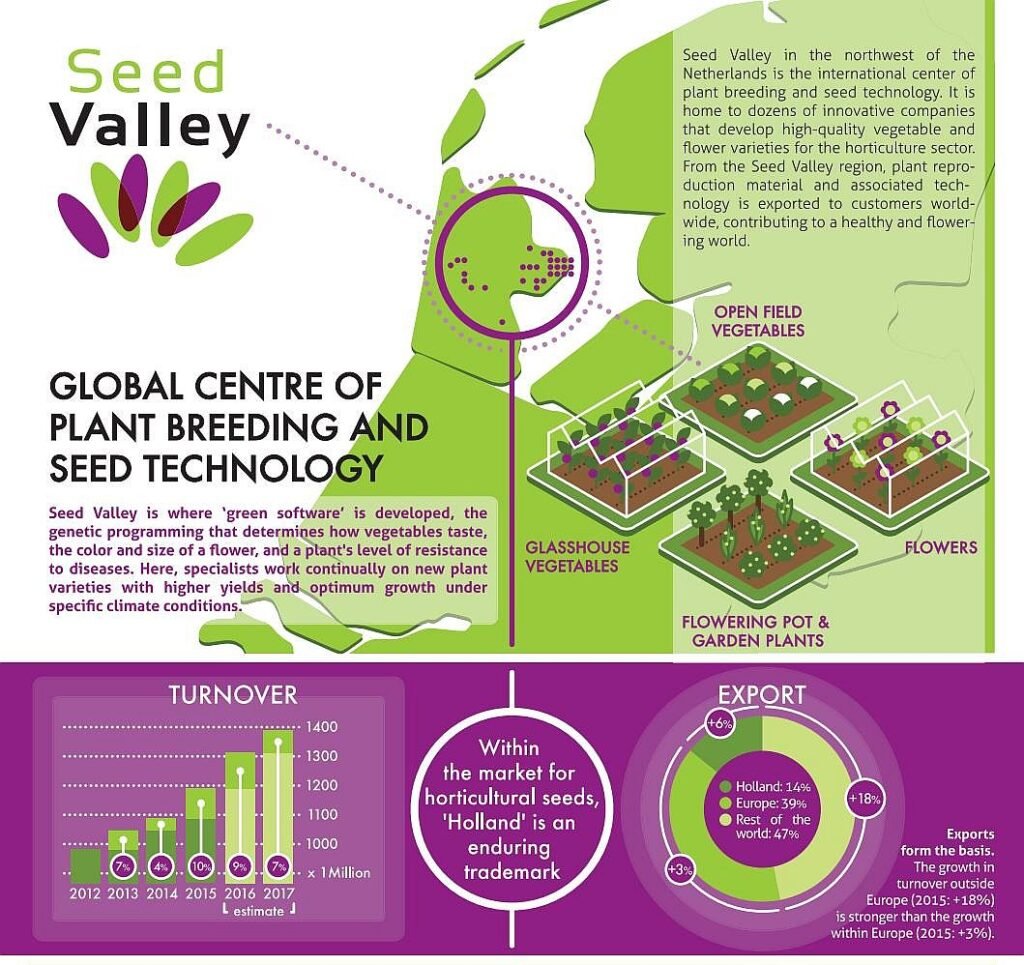Welcome to “Seed Valley” in the Netherlands, where some of the world’s largest seed conglomerates are attempting to overcome humanity’s pressing challenge of ‘food security’ by improving fruit and vegetable seeds that can produce more food per acre for a growing population while withstanding ever-evolving agricultural threats.

And, just as Silicon Valley has stamped its mark on the global technology sector, Seed Valley has done the same for farming: Wageningen University and Research (WUR), an hour southeast of Amsterdam, is the country’s agricultural sector’s nucleus and is widely regarded as the world leader in agricultural science.
After a horrific famine during World War II killed more than 20,000 Dutch, the government heavily invested in its agricultural sector through subsidies, rural infrastructure, and industrialization. Two decades ago, it pledged to grow twice as much food with half as many resources, a goal it has already far exceeded. Today, the Netherlands produces 6 percent of Europe’s food with only 1 percent of the continent’s farmland.

According to agricultural experts, we are still far from getting the maximum nourishment out of each seed. Shortening the time it takes to generate new seed types that can respond to the current challenges is one strategy to increase agricultural resilience in the face of climate change.
This is high-tech work, but it is a continuation of what people have been doing since the birth of agriculture 10,000 years ago: selectively breeding plants by crossing one type with a certain attribute, such as size or color, with another that has a different trait, such as resistance to a disease or bug.

Scientists can speed up the process by swiftly scanning its DNA for a genetic marker linked with a certain characteristic, a technique known as molecular marker technology. This and other technologies have enabled breeders to significantly shorten the number of years it takes to develop a new variety.
We’ve largely been winning the race to feed humanity due to thousands of small innovations to food production over time, helping us to grow more food on less land and thus feeding a population that’s more than doubled in the past 50 years., but it’s a race that will only get tougher. Countless more innovations will be critical to feed the nearly 10 billion people projected to be alive in 2050, all against the backdrop of a changing and worsening climate.
Reference- New York Times, National Geographic, Seed Valley website & PR, IPCC Report & website, Vox Magazine






